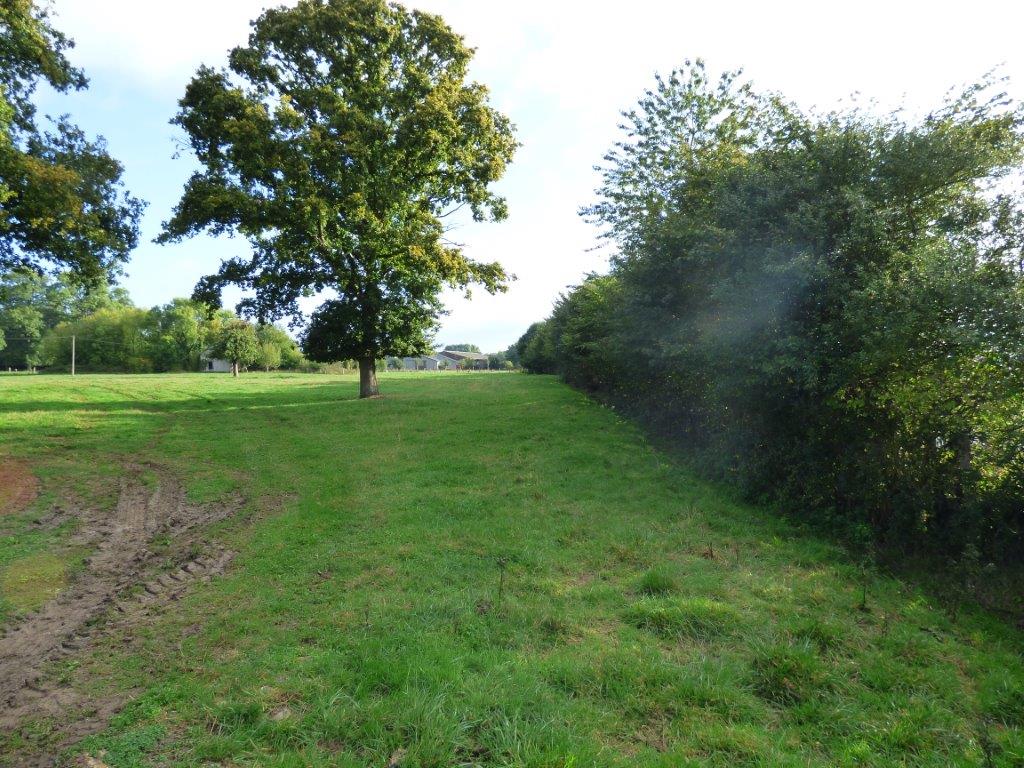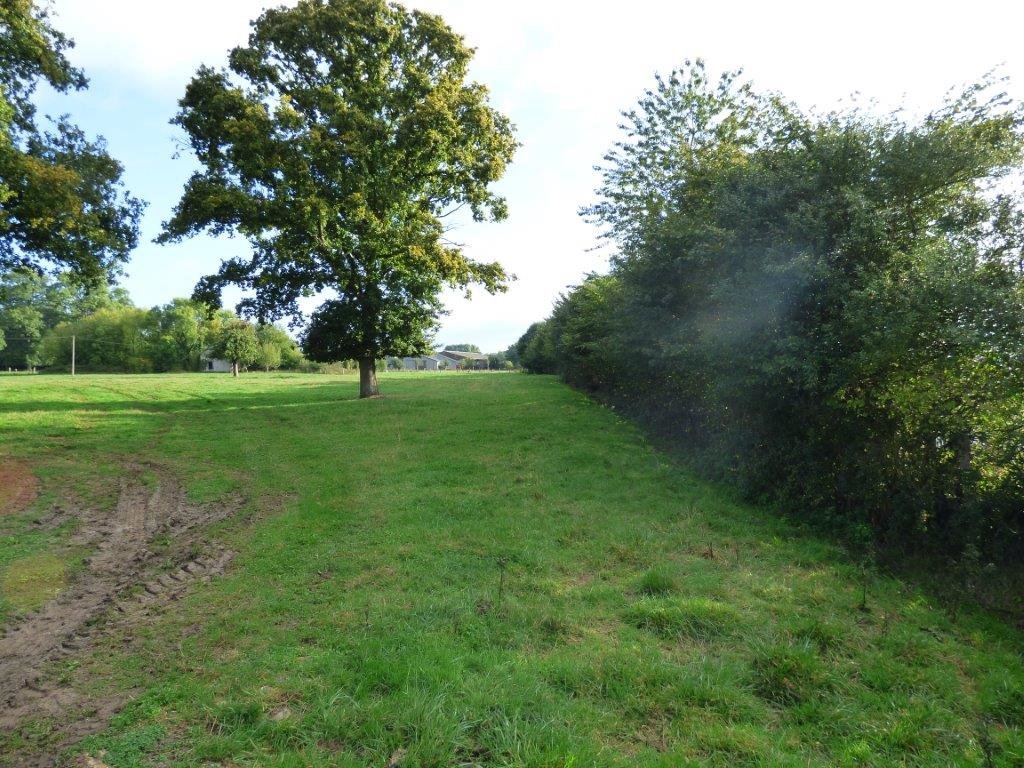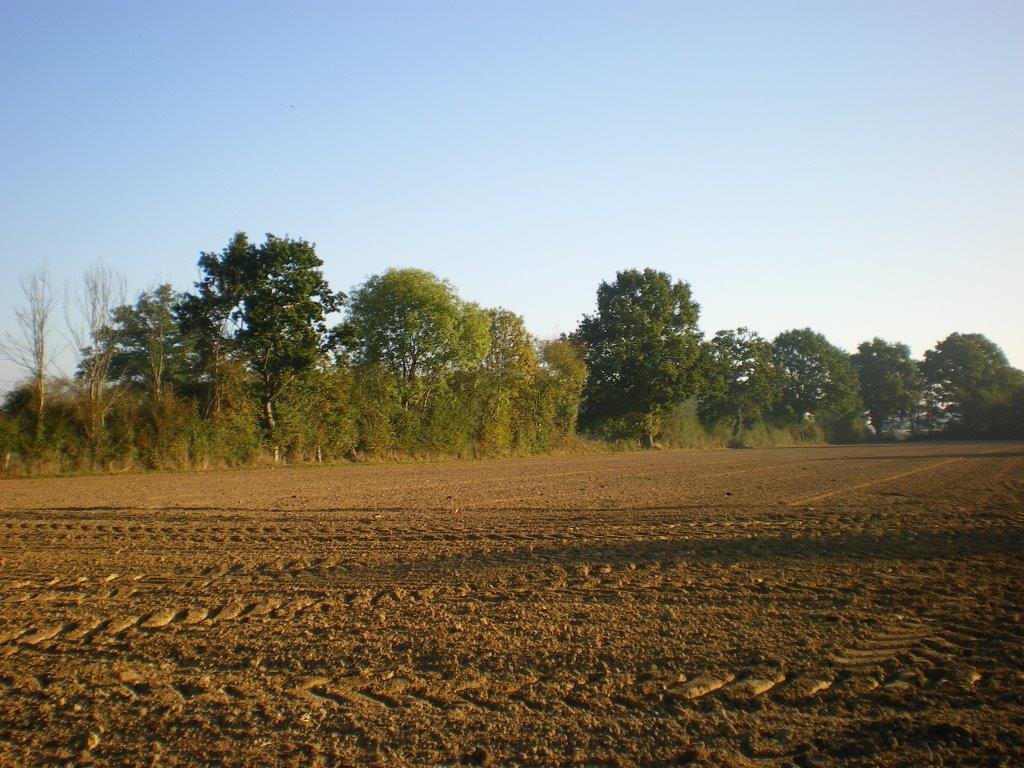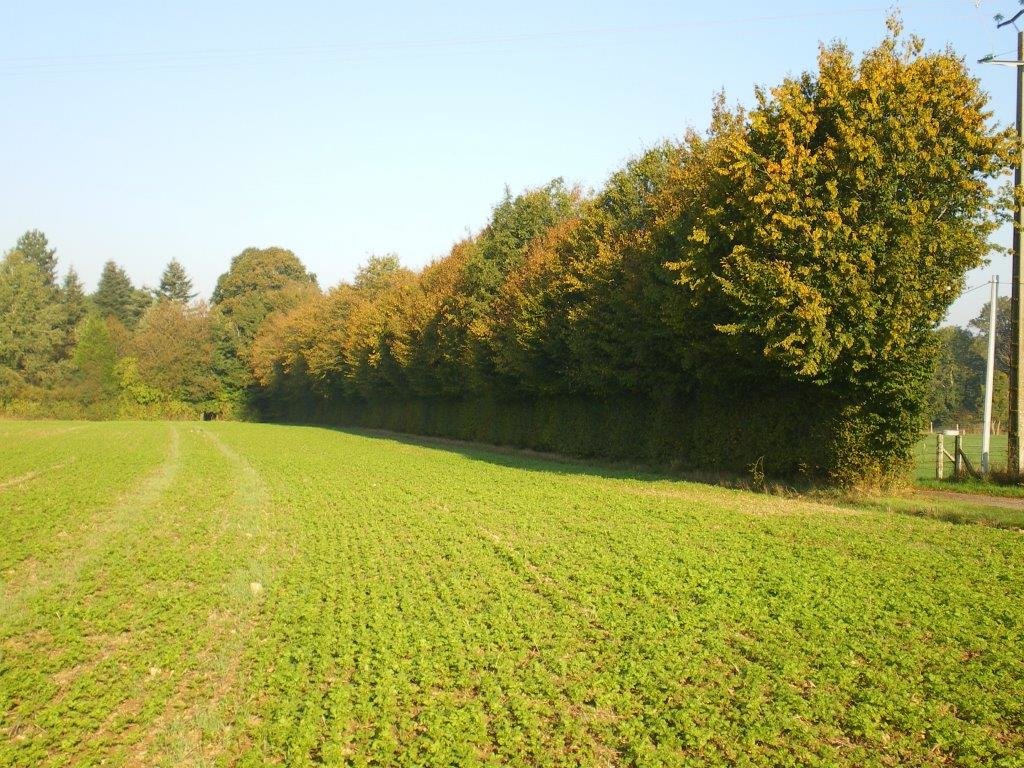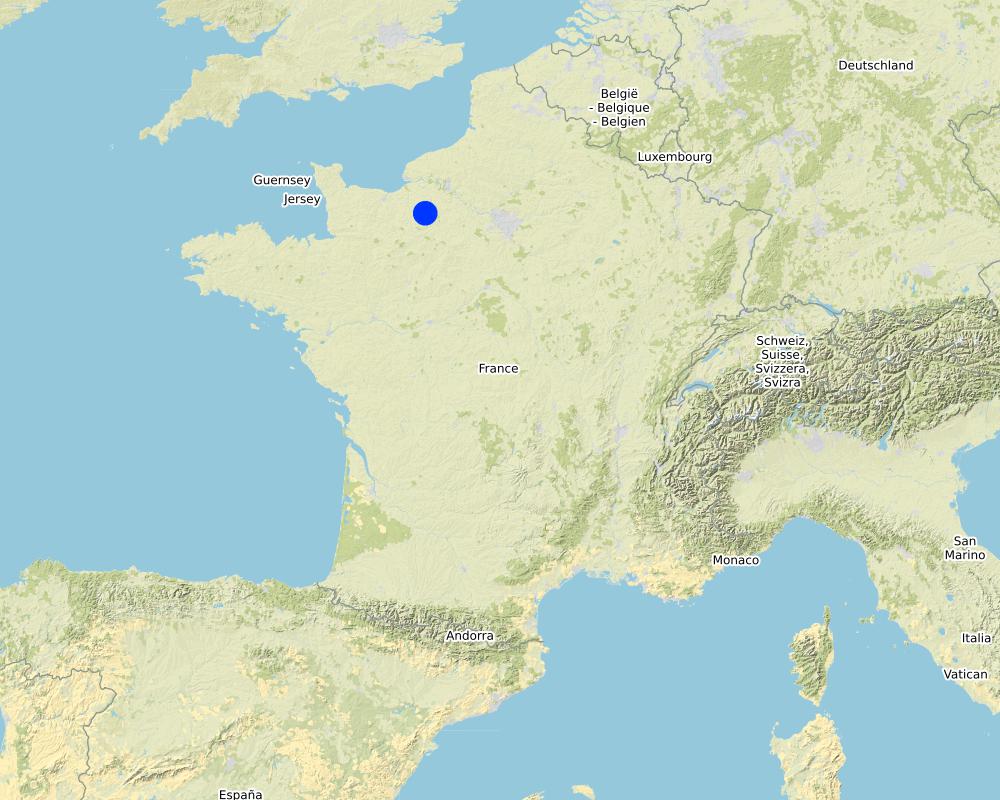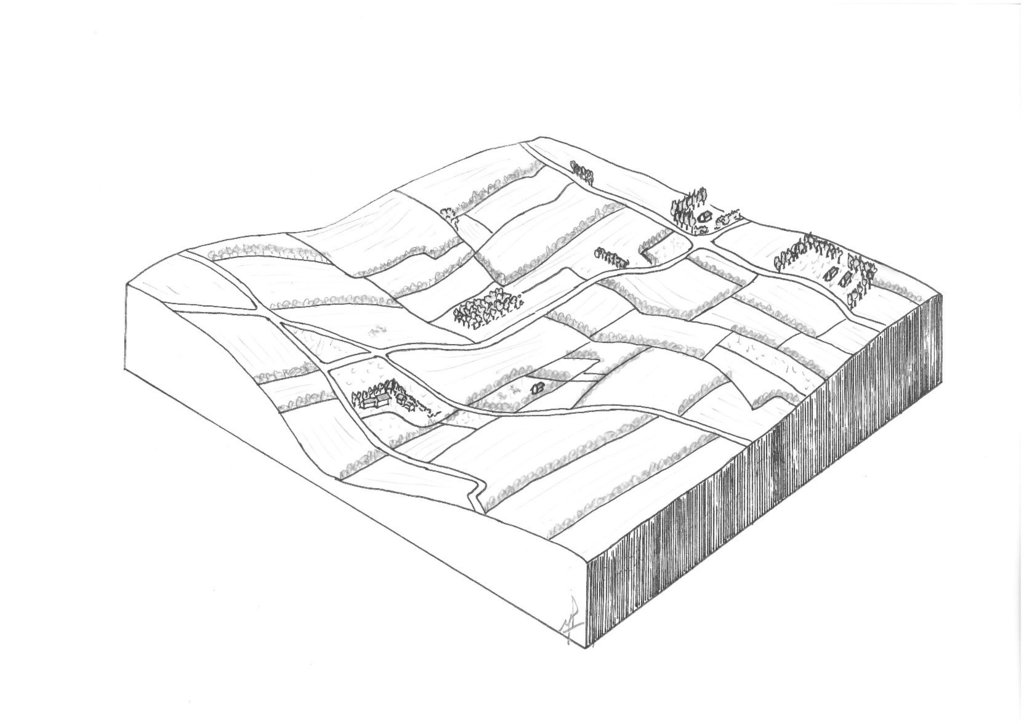Hedgerows as shelter belts along agricultural fields [France]
- Creation:
- Update:
- Compiler: Alan Radbourne
- Editors: David Robinson, David Norris, Sabine Reinsch
- Reviewers: Rima Mekdaschi Studer, William Critchley
gestion des haies
technologies_5644 - France
View sections
Expand all Collapse all1. General information
1.2 Contact details of resource persons and institutions involved in the assessment and documentation of the Technology
Key resource person(s)
SLM specialist:
Pivain Yann
Chambre d’agriculture de Normandie
France
land user:
Odienne Eric
EARL Bril Odienne
France
Name of project which facilitated the documentation/ evaluation of the Technology (if relevant)
European Interreg project FABulous FarmersName of the institution(s) which facilitated the documentation/ evaluation of the Technology (if relevant)
UK Centre for Ecology & Hydrology (CEH) - United KingdomName of the institution(s) which facilitated the documentation/ evaluation of the Technology (if relevant)
Association des Chambres d’agriculture de l’Arc Atlantique (AC3A) - France1.3 Conditions regarding the use of data documented through WOCAT
The compiler and key resource person(s) accept the conditions regarding the use of data documented through WOCAT:
Yes
1.4 Declaration on sustainability of the described Technology
Is the Technology described here problematic with regard to land degradation, so that it cannot be declared a sustainable land management technology?
No
2. Description of the SLM Technology
2.1 Short description of the Technology
Definition of the Technology:
Hedgerows are important to shelter the functional biodiversity necessary for natural regulation of crop pests. The extent of this effect depends on hedgerow management at farm level.
2.2 Detailed description of the Technology
Description:
Hedgerows are typical landscape features of rural Normandy. They surround agricultural fields, whether cultivated or under grassland. Hedges were already prominent in Normandy during the 19th century, and they reached a peak between the first and second world wars. However, since the 1960s, the restructuring of agricultural land and technical and technological developments in agriculture have led to the disappearance of hedgerows. The challenge since the beginning of the 21st century has been to maintain the existing hedgerows and to establish others. This is important in the light of today’s agri-environmental and climate issues.
The technology of replacing, restoring or planting new hedgerows has been applied in an area of mixed farming for the benefit of crop and animal protection, watercourse and soil erosion buffering and protection, and landscape and habitat connectivity improvements. The technology has been applied in a locality by a small number of farmers over a number of recent years.
Hedgerows are planted on the periphery of the fields with species spaced at 0.5 to 1 m apart. There are between 1 and 3, sometimes even 4 different vegetative types used in establishing the hedgerows - herbaceous, bushy, and shrubby plants and trees. The current average length is 36 metres of hedge per hectare. The position of ancient hedgerows in the landscape is the result of the history of parcels of land. In contrast, over the last ten years, agri-environmental criteria have been taken into account in selecting planting sites. The main local species used for new hedges are: Fraxinus, Quercus, Tilia, Carpinus, Acer campestre, Crataegus, Corylus and Ilex. Each hedge is considered to have an influence ranging from 50 to 200 m away from it in terms of windspeed, runoff, and biodiversity.
Hedgerows play a very important role in preventing:
- Biological degradation through maintaining and increasing wildlife biodiversity and stimulating biological regulation of crop pests
- Climate-induced impacts both at the local level (decrease of wind speeds, decrease of evapotranspiration, shade for animals) and at global level (carbon storage, substitution of fossil energies by renewable energy)
- Water degradation through maintaining and improving qualitative and quantitative regulation of water at the watershed scale
- Soil erosion by water and chemical deterioration through the conservation of soils
- Soil erosion by wind
Despite these benefits, this SLM technology has not yet been taken up widely. It is more than necessary to restart hedgerow management with Normandy farmers, especially as the use of external inputs (e.g. fertilizers and pesticides) is increasingly expensive for both farmers and society.
The compilation of this SLM is a part of the European Interreg project FABulous Farmers which aims to reduce the reliance on external inputs by encouraging the use of methods and interventions that increase the farm’s Functional AgroBiodiversity (FAB). Visit www.fabulousfarmers.eu and www.nweurope.eu/Fabulous-Farmers for more information.
2.3 Photos of the Technology
2.5 Country/ region/ locations where the Technology has been applied and which are covered by this assessment
Country:
France
Region/ State/ Province:
Normandy
Specify the spread of the Technology:
- evenly spread over an area
If precise area is not known, indicate approximate area covered:
- 10-100 km2
Is/are the technology site(s) located in a permanently protected area?
No
Map
×2.6 Date of implementation
If precise year is not known, indicate approximate date:
- less than 10 years ago (recently)
2.7 Introduction of the Technology
Specify how the Technology was introduced:
- as part of a traditional system (> 50 years)
- through projects/ external interventions
3. Classification of the SLM Technology
3.1 Main purpose(s) of the Technology
- improve production
- reduce, prevent, restore land degradation
- preserve/ improve biodiversity
- adapt to climate change/ extremes and its impacts
- create beneficial economic impact
3.2 Current land use type(s) where the Technology is applied
Land use mixed within the same land unit:
No

Cropland
- Annual cropping
- various root and cereal crops over time
Number of growing seasons per year:
- 1
Is intercropping practiced?
No
Is crop rotation practiced?
Yes
If yes, specify:
A variety of crops are grown in rotation, usually cereal or root crops dependent upon market demand - this technology is less dependent on the crop grown but the benefits of a hedgerow planted at the edges reduce the cropping area into smaller parcels.

Grazing land
Intensive grazing/ fodder production:
- Improved pastures
Animal type:
- cattle - non-dairy beef
Is integrated crop-livestock management practiced?
No
Species:
cattle - non-dairy beef
Count:
20

Forest/ woodlands
- Tree plantation, afforestation
Tree plantation, afforestation: Specify origin and composition of species:
- Mixed varieties
Type of tree plantation, afforestation:
- temperate continental forest plantation
- Main local species Fraxinus, Quercus, Tilia, Carpinus, Acer campestre, Crataegus, Corylus, Ilex
Are the trees specified above deciduous or evergreen?
- mixed deciduous/ evergreen
Products and services:
- Fuelwood
- Nature conservation/ protection
3.3 Has land use changed due to the implementation of the Technology?
Has land use changed due to the implementation of the Technology?
- No (Continue with question 3.4)
3.4 Water supply
Water supply for the land on which the Technology is applied:
- rainfed
3.5 SLM group to which the Technology belongs
- windbreak/ shelterbelt
- improved ground/ vegetation cover
- integrated pest and disease management (incl. organic agriculture)
3.6 SLM measures comprising the Technology

vegetative measures
- V1: Tree and shrub cover

structural measures
- S11: Others

management measures
- M3: Layout according to natural and human environment
- M5: Control/ change of species composition
3.7 Main types of land degradation addressed by the Technology

soil erosion by water
- Wg: gully erosion/ gullying

soil erosion by wind
- Et: loss of topsoil

chemical soil deterioration
- Cn: fertility decline and reduced organic matter content (not caused by erosion)

biological degradation
- Bh: loss of habitats
- Bs: quality and species composition/ diversity decline
- Bp: increase of pests/ diseases, loss of predators
3.8 Prevention, reduction, or restoration of land degradation
Specify the goal of the Technology with regard to land degradation:
- prevent land degradation
- reduce land degradation
4. Technical specifications, implementation activities, inputs, and costs
4.1 Technical drawing of the Technology
Technical specifications (related to technical drawing):
Hedgerows are planted on the periphery of the plots. The trees are spaced 0.5 to 1 m apart. The height varies from 1.5 m to more than 20 m. There are between 1 and 3, even 4 different vegetative strata (herbaceous, bushy, shrubby, tree). The local average length is 36 m of hedge per hectare (the departmental average is 19 m / ha). The position of old hedges is more the result of the history of parcels (properties) than linked to agri-environmental criteria. Over the last ten years, agri-environmental criteria have been taken into account in choosing planting sites. The main local species: Fraxinus, Quercus, Tilia, Carpinus, Acer campestre, Crataegus, Corylus and Ilex.
Each hedge is considered to have an influence ranging from 50 to 200 m away from it (in terms of wind, runoff, biodiversity).
Author:
Yann Pivain
Date:
01/11/2019
4.2 General information regarding the calculation of inputs and costs
Specify how costs and inputs were calculated:
- per Technology unit
Specify unit:
per 1 km of new / replanted hedgerow
other/ national currency (specify):
€
If relevant, indicate exchange rate from USD to local currency (e.g. 1 USD = 79.9 Brazilian Real): 1 USD =:
0.9
Indicate average wage cost of hired labour per day:
120
4.3 Establishment activities
| Activity | Timing (season) | |
|---|---|---|
| 1. | Decide on planting site, the design/layout of the hedge and the species | Spring |
| 2. | Soil preparation through clearing of land and harrowing | After harvest of crops |
| 3. | Application of mulch to planting strip | After harvest of crops |
| 4. | Planting of trees & protections (e.g. deer guards) | November to January |
4.4 Costs and inputs needed for establishment
| Specify input | Unit | Quantity | Costs per Unit | Total costs per input | % of costs borne by land users | |
|---|---|---|---|---|---|---|
| Labour | Design and planning | person-days | 0.3 | 120.0 | 36.0 | 50.0 |
| Labour | Surface preparation for planting | person-days | 0.1 | 120.0 | 12.0 | 100.0 |
| Labour | Application of mulch | person-days | 0.3 | 120.0 | 36.0 | 100.0 |
| Labour | Planting trees | person-days | 11.0 | 120.0 | 1320.0 | 100.0 |
| Equipment | Tractor with harrow | machine-days | 0.1 | 50.0 | 5.0 | 100.0 |
| Plant material | Trees | Piece | 1000.0 | 2.0 | 2000.0 | 50.0 |
| Plant material | Tree protection (i.e. wild animal guards) | Piece | 1000.0 | 0.5 | 500.0 | 80.0 |
| Plant material | Mulching | Piece | 1000.0 | 1.3 | 1300.0 | 80.0 |
| Total costs for establishment of the Technology | 5209.0 | |||||
| Total costs for establishment of the Technology in USD | 5787.78 | |||||
If land user bore less than 100% of costs, indicate who covered the remaining costs:
local community / subsidy
Comments:
Costs do not include training of farmers.
4.5 Maintenance/ recurrent activities
| Activity | Timing/ frequency | |
|---|---|---|
| 1. | Hedgerow maintenance (cutting/pruning) | From June to December every 3rd year |
| 2. | Wood harvest (20 years after planting) | December to March |
4.6 Costs and inputs needed for maintenance/ recurrent activities (per year)
| Specify input | Unit | Quantity | Costs per Unit | Total costs per input | % of costs borne by land users | |
|---|---|---|---|---|---|---|
| Labour | Hedgerow maintenance (cutting/pruning) | day | 0.2 | 120.0 | 24.0 | 100.0 |
| Equipment | Maintenance cutter | day | 0.2 | 50.0 | 10.0 | 100.0 |
| Total costs for maintenance of the Technology | 34.0 | |||||
| Total costs for maintenance of the Technology in USD | 37.78 | |||||
4.7 Most important factors affecting the costs
Describe the most determinate factors affecting the costs:
Time necessary for maintenance,
Good training to do quality work
5. Natural and human environment
5.1 Climate
Annual rainfall
- < 250 mm
- 251-500 mm
- 501-750 mm
- 751-1,000 mm
- 1,001-1,500 mm
- 1,501-2,000 mm
- 2,001-3,000 mm
- 3,001-4,000 mm
- > 4,000 mm
Specify average annual rainfall (if known), in mm:
850.00
Specifications/ comments on rainfall:
No dry season or marked rainy season. The rains fall fairly regularly
Indicate the name of the reference meteorological station considered:
Evreux (27000)
Agro-climatic zone
- sub-humid
5.2 Topography
Slopes on average:
- flat (0-2%)
- gentle (3-5%)
- moderate (6-10%)
- rolling (11-15%)
- hilly (16-30%)
- steep (31-60%)
- very steep (>60%)
Landforms:
- plateau/plains
- ridges
- mountain slopes
- hill slopes
- footslopes
- valley floors
Altitudinal zone:
- 0-100 m a.s.l.
- 101-500 m a.s.l.
- 501-1,000 m a.s.l.
- 1,001-1,500 m a.s.l.
- 1,501-2,000 m a.s.l.
- 2,001-2,500 m a.s.l.
- 2,501-3,000 m a.s.l.
- 3,001-4,000 m a.s.l.
- > 4,000 m a.s.l.
Indicate if the Technology is specifically applied in:
- not relevant
5.3 Soils
Soil depth on average:
- very shallow (0-20 cm)
- shallow (21-50 cm)
- moderately deep (51-80 cm)
- deep (81-120 cm)
- very deep (> 120 cm)
Soil texture (topsoil):
- medium (loamy, silty)
- fine/ heavy (clay)
Soil texture (> 20 cm below surface):
- fine/ heavy (clay)
Topsoil organic matter:
- medium (1-3%)
5.4 Water availability and quality
Ground water table:
> 50 m
Availability of surface water:
good
Water quality (untreated):
poor drinking water (treatment required)
Water quality refers to:
both ground and surface water
Is water salinity a problem?
No
Is flooding of the area occurring?
Yes
Regularity:
episodically
5.5 Biodiversity
Species diversity:
- medium
Habitat diversity:
- high
5.6 Characteristics of land users applying the Technology
Sedentary or nomadic:
- Sedentary
Market orientation of production system:
- commercial/ market
Off-farm income:
- less than 10% of all income
Relative level of wealth:
- rich
Individuals or groups:
- individual/ household
Level of mechanization:
- mechanized/ motorized
Gender:
- women
- men
Age of land users:
- youth
- middle-aged
5.7 Average area of land used by land users applying the Technology
- < 0.5 ha
- 0.5-1 ha
- 1-2 ha
- 2-5 ha
- 5-15 ha
- 15-50 ha
- 50-100 ha
- 100-500 ha
- 500-1,000 ha
- 1,000-10,000 ha
- > 10,000 ha
Is this considered small-, medium- or large-scale (referring to local context)?
- medium-scale
5.8 Land ownership, land use rights, and water use rights
Land ownership:
- individual, not titled
- individual, titled
Land use rights:
- individual
Water use rights:
- communal (organized)
Are land use rights based on a traditional legal system?
No
5.9 Access to services and infrastructure
health:
- poor
- moderate
- good
education:
- poor
- moderate
- good
technical assistance:
- poor
- moderate
- good
employment (e.g. off-farm):
- poor
- moderate
- good
markets:
- poor
- moderate
- good
energy:
- poor
- moderate
- good
roads and transport:
- poor
- moderate
- good
drinking water and sanitation:
- poor
- moderate
- good
financial services:
- poor
- moderate
- good
6. Impacts and concluding statements
6.1 On-site impacts the Technology has shown
Socio-economic impacts
Production
crop production
Comments/ specify:
Possible loss of some cropland replaced with hedgerows, although most hedging in this instance was reinstating old field boundaries - i.e. where historic boundary lines existed but were removed for machenery or to enlarge field size.
crop quality
Comments/ specify:
Greater crop protection and more beneficial species improve crop quality
animal production
Comments/ specify:
Shelter belts improve animal welfare leading to better weight gain.
wood production
Comments/ specify:
Hedgerows can be coppiced for wood crop.
risk of production failure
Comments/ specify:
Shelter belt reduces risk of crop failure from weather extremes (i.e. wind)
product diversity
Comments/ specify:
Wood crop added to diversity of products
production area
Comments/ specify:
Although loss of crop land, this is replaced with wood crop diversity
land management
Comments/ specify:
Smaller parcels of land make land management more restrictive for large machinery.
Income and costs
expenses on agricultural inputs
Comments/ specify:
Balance of increased time and management of a diversity of crops, yet less crop management with improved pest control and phyicsl stress reduction from more shelter.
farm income
Comments/ specify:
No change in balance of less crop production but addition of woody crop.
diversity of income sources
Comments/ specify:
Diversity added with option of woody crop
workload
Comments/ specify:
Smaller field parcels make crop management harder having to use smaller machinery and there is an addition of hedgerow maintenence workload.
Ecological impacts
Water cycle/ runoff
water quality
Comments/ specify:
Hedgerows act as buffer strips capturing wash off from fields before it reaches the water course
surface runoff
Comments/ specify:
Hedgerows act as buffer strips capturing wash from fields
excess water drainage
Comments/ specify:
Improved soil infiltration in hedgerows helps drain excess water
Soil
soil moisture
Comments/ specify:
Improved soil infiltration in hedgerows helps maintain soil moisture capacity
soil loss
Comments/ specify:
Hedgerows act as buffer strips capturing soil wash from fields
soil compaction
Comments/ specify:
Reduced machinery size (in places) reduces compaction, plus less soil compaction by hedgerows.
soil organic matter/ below ground C
Comments/ specify:
Increased organic matter in hedgerows
Biodiversity: vegetation, animals
Vegetation cover
Comments/ specify:
More year round cover
biomass/ above ground C
Comments/ specify:
Increased wih hedgerows
plant diversity
Comments/ specify:
More diverse species with planting for hedgerows
animal diversity
Comments/ specify:
Increased habitat diversity and area for more animal presence and diversity
beneficial species
Comments/ specify:
Encouragement of beneficial species with habitat creation in hedgerows that can aid natural pest and disease control through the presence of predator species that control pest species.
habitat diversity
Comments/ specify:
Within hedgerow habitat addition
pest/ disease control
Comments/ specify:
Encouragement of beneficial species with habitat creation in hedgerows that can aid natural pest and disease control through the presence of predator species that control pest species.
Climate and disaster risk reduction
flood impacts
Comments/ specify:
Improved soil infiltration reduces flooding risk
wind velocity
Comments/ specify:
Shelter belts reduce wind velocity over crops
6.2 Off-site impacts the Technology has shown
groundwater/ river pollution
Comments/ specify:
Hedgerows act as buffer strips capturing wash off from fields before it reaches the water course
buffering/ filtering capacity
Comments/ specify:
Hedgerows act as buffer strips capturing wash off from fields before it reaches the water course
wind transported sediments
Comments/ specify:
Shelter belts reduce wind velocity over crops and bare soil for less erosion & transportation
damage on neighbours' fields
Comments/ specify:
Shelter belts reduce wind velocity over crops and bare soil for less erosion & transportation
impact of greenhouse gases
Comments/ specify:
Increased tree cover supports a reduction in GHG
6.3 Exposure and sensitivity of the Technology to gradual climate change and climate-related extremes/ disasters (as perceived by land users)
Gradual climate change
Gradual climate change
| Season | increase or decrease | How does the Technology cope with it? | |
|---|---|---|---|
| annual temperature | increase | moderately | |
| annual rainfall | increase | well |
Climate-related extremes (disasters)
Meteorological disasters
| How does the Technology cope with it? | |
|---|---|
| local rainstorm | moderately |
| local windstorm | moderately |
Climatological disasters
| How does the Technology cope with it? | |
|---|---|
| drought | not well |
| forest fire | not well |
| land fire | not well |
Hydrological disasters
| How does the Technology cope with it? | |
|---|---|
| general (river) flood | not well |
Biological disasters
| How does the Technology cope with it? | |
|---|---|
| epidemic diseases | moderately |
| insect/ worm infestation | moderately |
Other climate-related consequences
Other climate-related consequences
| How does the Technology cope with it? | |
|---|---|
| extended growing period | not well |
| reduced growing period | not well at all |
| sea level rise | not well at all |
6.4 Cost-benefit analysis
How do the benefits compare with the establishment costs (from land users’ perspective)?
Short-term returns:
negative
Long-term returns:
slightly positive
How do the benefits compare with the maintenance/ recurrent costs (from land users' perspective)?
Short-term returns:
neutral/ balanced
Long-term returns:
neutral/ balanced
6.5 Adoption of the Technology
- 1-10%
Of all those who have adopted the Technology, how many did so spontaneously, i.e. without receiving any material incentives/ payments?
- 0-10%
6.6 Adaptation
Has the Technology been modified recently to adapt to changing conditions?
Yes
other (specify):
Over the last ten years, agri-environmental criteria have been taken into account in choosing planting sites
6.7 Strengths/ advantages/ opportunities of the Technology
| Strengths/ advantages/ opportunities in the land user’s view |
|---|
| Reduced winds and wind erosion |
| Creation of spaces for wildlife leading to increased biodiversity |
| Strengths/ advantages/ opportunities in the compiler’s or other key resource person’s view |
|---|
| Creation of climate zone "temperate" favourable to crops and / or animals |
| More space for biodiversity and habitat, particularly those that provide a beneficial return for agricultural production |
| Diversification to add woody crops |
| Connected landscape and habitats through hedgerow linkages to each other and woodlands. |
6.8 Weaknesses/ disadvantages/ risks of the Technology and ways of overcoming them
| Weaknesses/ disadvantages/ risks in the land user’s view | How can they be overcome? |
|---|---|
| Cost and maintenance time | Use harvested wood/material to cover increased costs for farmer to maintain hedgerows |
| Competition between cropping areas for natural resources | Increase the technical understanding of tree management / crop fringes |
| Unclear EU financial support for hedge management (instability of the common agricultural policy) | Unknown / public or private payment for ecosystem services and goods |
| Weaknesses/ disadvantages/ risks in the compiler’s or other key resource person’s view | How can they be overcome? |
|---|---|
| Unclear EU financial support for hedge management (instability of the common agricultural policy) | Unknown / public or private payment for ecosystem services and goods |
7. References and links
7.1 Methods/ sources of information
- field visits, field surveys
1 field visit
- interviews with land users
2 land users who have implemented hedgerow planting
- interviews with SLM specialists/ experts
1 SLM expert consulted as information compiled
- compilation from reports and other existing documentation
Les haies Rurales : rôles, création, entretien
When were the data compiled (in the field)?
08/10/2019
7.2 References to available publications
Title, author, year, ISBN:
Les haies Rurales : rôles, création, entretien / Fabien LIAGRE / 2006 / ISBN 2-85557-137-5
Available from where? Costs?
Edition France Agricole / 40 €
Links and modules
Expand all Collapse allLinks
No links
Modules
No modules


